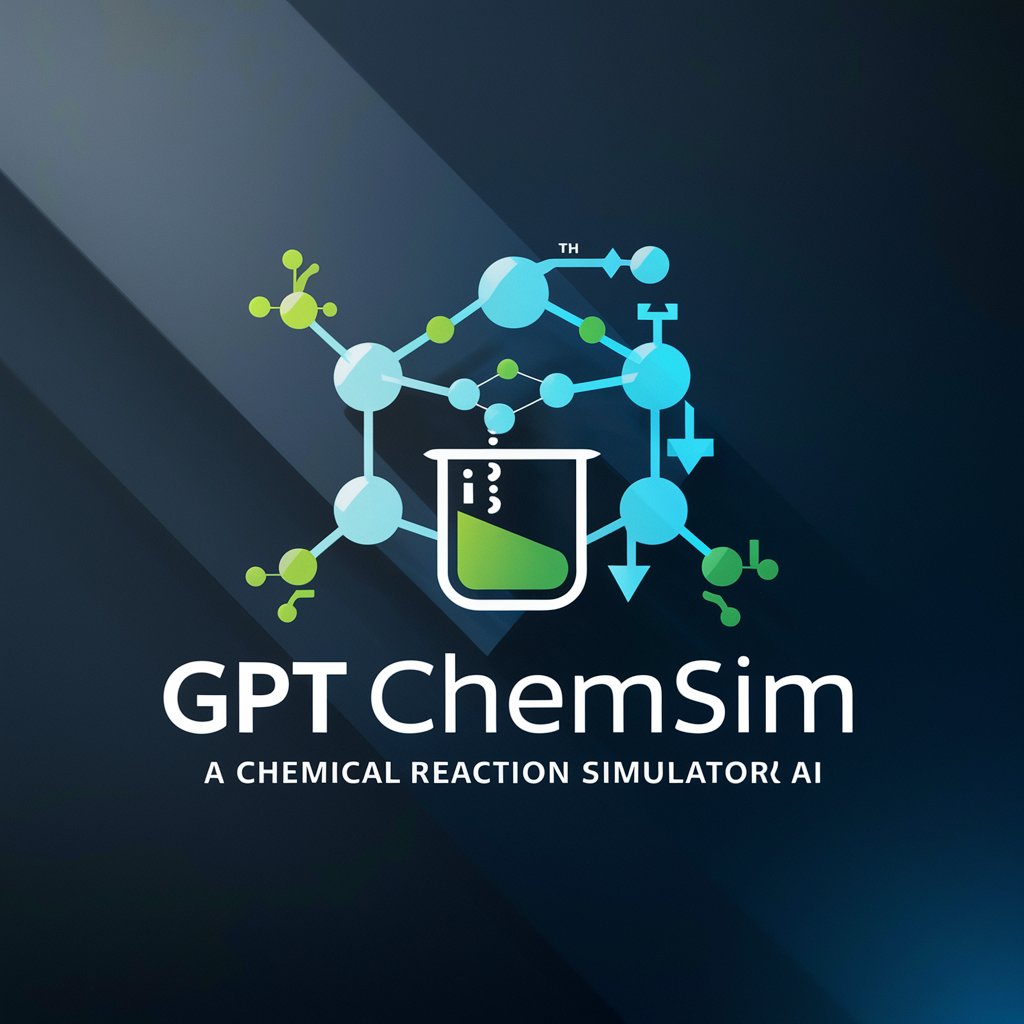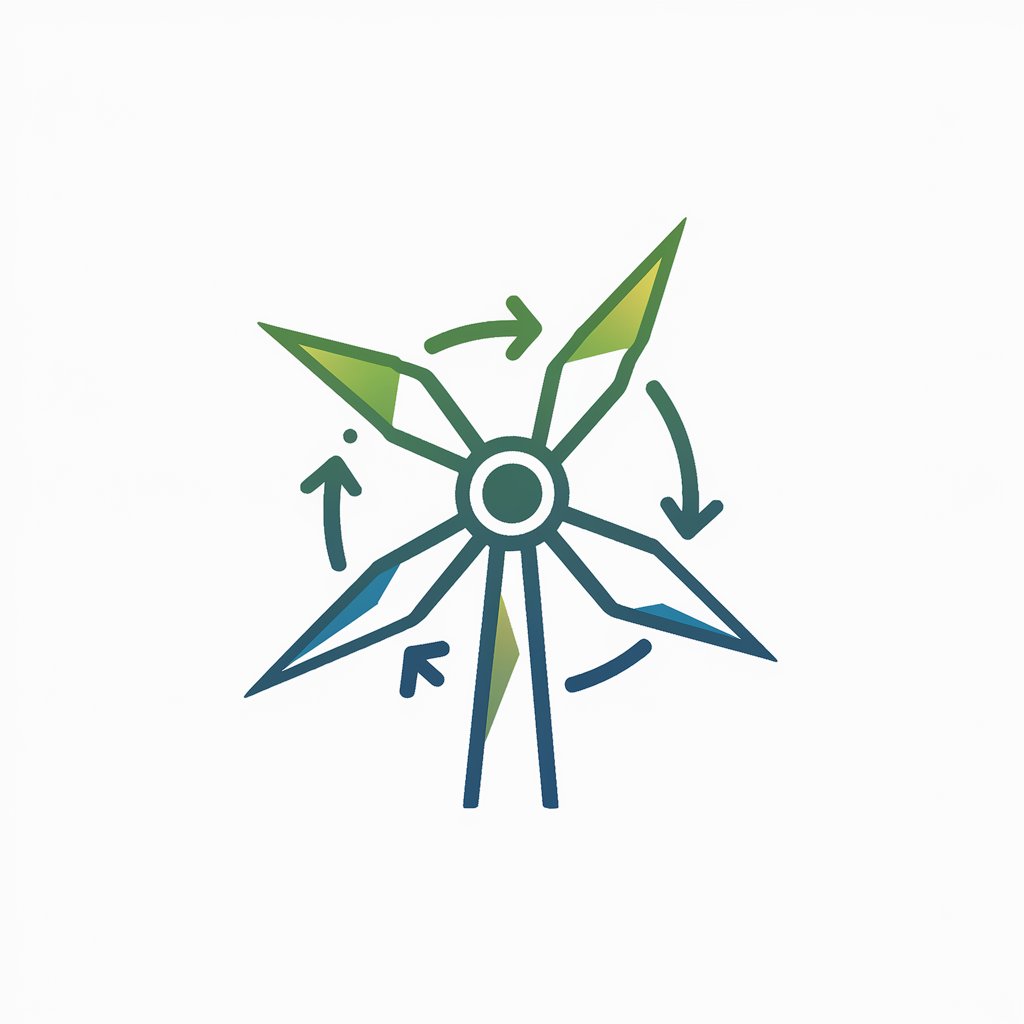Chemical Reaction Simulator - AI-Powered Reaction Insights

Welcome to GPT ChemSim, your chemical reaction simulator!
Deciphering chemistry with AI
Simulate the reaction between...
What are the byproducts of...
Explain the mechanism of...
Predict the outcome of the reaction...
Get Embed Code
Introduction to Chemical Reaction Simulator
The Chemical Reaction Simulator is designed to be a comprehensive tool for understanding and predicting the mechanisms and outcomes of various chemical reactions. It aims to assist researchers, educators, and students by simulating chemical reactions based on user-provided data, thereby offering insights into possible reaction pathways, byproducts, and the conditions required for specific reactions to occur. For example, if a user inputs reactants A and B, the simulator can predict the products of their reaction, suggest possible intermediates, and advise on the reaction conditions such as temperature and pressure. This tool is invaluable in planning experiments, understanding complex reaction mechanisms, and in educational settings where visualizing reactions dynamically can enhance learning. Powered by ChatGPT-4o。

Main Functions of Chemical Reaction Simulator
Reaction Prediction
Example
Predicting the outcome of a reaction between sodium (Na) and chlorine (Cl) to form sodium chloride (NaCl).
Scenario
A student uses this function to understand how ionic compounds are formed, applying the simulation results in a lab experiment to verify theoretical predictions.
Reaction Pathway Analysis
Example
Analyzing the mechanism of the esterification reaction between acetic acid and ethanol to produce ethyl acetate.
Scenario
A researcher uses this to explore alternative pathways that could lead to higher yields or selectivity in the synthesis of ethyl acetate for industrial applications.
Condition Optimization
Example
Determining the optimal temperature and pressure for the Haber process to maximize ammonia yield.
Scenario
Engineers at a chemical manufacturing plant use this feature to optimize production conditions, improving efficiency and reducing costs.
Educational Demonstrations
Example
Visualizing the acid-base neutralization reaction between hydrochloric acid and sodium hydroxide to form water and sodium chloride.
Scenario
Educators incorporate this tool into their teaching materials to provide students with a dynamic visualization of chemical reactions, enhancing their understanding of reaction concepts.
Ideal Users of Chemical Reaction Simulator
Chemistry Students
Students studying chemistry at various levels can use the simulator to visualize chemical reactions, understand reaction mechanisms, and predict reaction outcomes, which aids in their learning and preparation for laboratory experiments.
Research Scientists
Scientists working in research and development can utilize the simulator to predict reaction outcomes, analyze reaction pathways, and optimize conditions for new or existing reactions, saving time and resources in the lab.
Chemical Engineers
Engineers in the chemical manufacturing industry can use the simulator to model and optimize chemical processes, enhancing efficiency, yield, and safety in production facilities.
Educators
Teachers and professors can incorporate the simulator into their curriculum to provide interactive and engaging demonstrations of chemical reactions, fostering a deeper understanding of chemistry among students.

How to Use Chemical Reaction Simulator
Begin your journey
Start by accessing yeschat.ai for a complimentary trial, no sign-in or ChatGPT Plus subscription required.
Input reaction details
Enter the reactants, products, and any specific conditions like temperature or catalysts into the simulator to model your chemical reaction.
Review the simulation
Analyze the provided reaction mechanism, pathways, and byproducts that the simulator predicts.
Adjust parameters
Experiment with changing conditions or reactants to see how the reaction outcomes vary, enhancing your understanding of chemical processes.
Consult and verify
Use the insights gained as a guide for laboratory experiments or academic research, but always verify with actual experiments or consult with professionals for complex queries.
Try other advanced and practical GPTs
Redaction Analyst
Unlocking Secrets in Redacted Texts with AI

Redaction Wizard
Automate your privacy with AI-powered redaction.

Ingredients = Redaction/communication
Crafting Content, Simplified.

Reaction Analyst
Unlock the nuances of human relations with AI-powered insights.

Essential Advisor
Your AI-Powered Advisory Companion

Your Essential GPT
Empowering Knowledge with AI

Me Right Now. (Reactions for Chat)
Elevate chats with AI-powered humor

GPT Spanish Orthography and Redaction
Empower your Spanish writing with AI

Wind energy
Harness AI for Wind Energy Intelligence

Wind Farm Layout Optimizer
Optimizing Wind Farms with AI

Catch The Wind meaning?
Empower your words with AI

Wind Manager: Daily Helper
Empowering wind energy projects with AI.

Chemical Reaction Simulator Q&A
Can Chemical Reaction Simulator predict reaction kinetics?
Yes, it can provide insights into reaction kinetics by simulating how reaction rates change under various conditions, though it's important to validate these predictions experimentally.
Is it possible to simulate organic reactions with this tool?
Absolutely. The simulator can model a wide range of organic reactions, offering predictions on reaction pathways, intermediates, and products.
How does temperature affect the simulations?
Temperature is a crucial parameter that can significantly influence the outcome of a simulation by affecting reaction rates and the favorability of different pathways.
Can the simulator handle reactions under extreme conditions?
Yes, it is designed to predict how chemical reactions would proceed under a variety of conditions, including extreme pressures and temperatures.
How accurate are the simulator's predictions?
While the simulator uses sophisticated algorithms to predict reaction outcomes, accuracy can vary, and results should be validated through laboratory experimentation.
